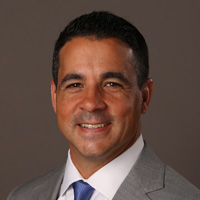Smart Moves for Investors in the 'Hazard Zone'
For those right around retirement age, protecting future income in this aging bull market requires careful preparation and creative diversification.


The current bull market is the longest in history, and it’s been a good ride.
It’s given investors who lost money in past downturns an opportunity to replenish their savings in time for retirement. And it’s provided the growing number of workers who don’t have the security of an employer pension a chance to build a nest egg from which to pull income when they no longer have a regular paycheck.
But no rally lasts forever, and this one — despite some cloudy days here and there — has lasted more than a decade. That doesn’t mean anything in and of itself (although the market is traditionally cyclical). However, there are other signs of a coming storm. Stock valuations are at the high end of their historical averages. There’s a general nervousness around what will happen next with interest rates and how that will affect the economy. And there are days when it feels as though we may be one presidential tweet away from a serious fall.

Sign up for Kiplinger’s Free E-Newsletters
Profit and prosper with the best of expert advice on investing, taxes, retirement, personal finance and more - straight to your e-mail.
Profit and prosper with the best of expert advice - straight to your e-mail.
Which means those who are in what we call the “hazard zone” — about five years away from retirement, or less than five years in — should be especially vigilant about the negative impact a correction (or worse) could have on their portfolio and overall retirement plan. You definitely don’t want to be double-dipping during this period — taking money out of your portfolio to live on at the same time you’re losing money in the market.
That doesn’t mean you should try to time the market by selling off all your stocks and putting everything into cash before there’s a drop. But the age of this bull run and heightened volatility in the market are good reminders that it’s time to protect your nest egg from risk with the right level of diversification. And for many in the hazard zone, that means considering a wider range of asset classes, including alternative and non-market strategies.
Moving away from a straight stock-and-bond strategy and mixing in some investments with a low correlation to the stock market can help reduce the negative effects of a correction. If the bull market continues, you can still make money. More significantly, though, if it doesn’t, you can preserve what you have.
A plan to diversify risk could involve using:
Market-based strategies
You still can include more conventional investments in your diversified portfolio, but you’ll likely want to look at dialing back on equities and maybe increasing your exposure to more traditional fixed-income investments, such as government or investment-grade corporate bonds.
It is worth noting, though, that in this period of low interest rates, the fixed-income market may not offer much opportunity for significant returns from interest rates. Further, once rates eventually start going up, you will be holding bonds with less than desirable rates, forcing you to possibly sell at a capital loss. This presents significant headwinds for bond investors.
Alternative strategies
These investments typically have different returns and risk profiles than stocks and bonds, and a lower correlation to the market. Options could include real estate, commodities, private capital and other investments that could provide an income cushion should stock prices fall.
Non-market strategies
Certain types of annuities, such as fixed index annuities, fall into this category and may provide retirees the greatest potential for minimizing the volatility in their investment portfolios. With this strategy, you are able to participate in the upside growth of the market, while, at the same time, protect your principal if the market should go down. It is worth noting that all annuities are not created equal, so you want to be sure you know how this strategy will best work inside of your financial plan before you sign on the dotted line.
Finding the right combination of assets for your retirement portfolio will depend on your specific situation, but diversifying your mix can help you prepare for what’s to come — whether it’s sunshine or a storm. This is why it’s important to have an independent adviser, a fiduciary who has access to all the products a client might need.
The biggest mistake I see when people come to our office for the first time is they think they’re adequately diversified, but they aren’t. Maybe that’s because they’ve been managing their investments themselves, or their adviser has them in a bunch of mutual funds, which makes them feel as if they have some variety. But in reality, those mutual funds aren’t giving them the diversification they need. Their funds often overlap and hold the same or very similar securities, so these investors have far more risk than they want without realizing it.
The good news is this “storm warning” is more like what you’d get for a hurricane than for a tornado. There’s time to react — it just isn’t clear how much time. But with the right portfolio in place, you’ll have a better chance to weather the worst no matter when the bull market ends.
Kim Franke-Folstad contributed to this article.
Disclaimer
The appearances in Kiplinger were obtained through a PR program. The columnist received assistance from a public relations firm in preparing this piece for submission to Kiplinger.com. Kiplinger was not compensated in any way.
Get Kiplinger Today newsletter — free
Profit and prosper with the best of Kiplinger's advice on investing, taxes, retirement, personal finance and much more. Delivered daily. Enter your email in the box and click Sign Me Up.

David Faulkner is a CERTIFIED FINANCIAL PLANNER™ professional with Texas-based Spectrum Advisors (www.spectrumadvisors.net). His focus is on holistic retirement planning and financial awareness, and he is fully licensed in investments and insurance.
-
 Stock Market Today: Stocks Gain on Tech, Auto Tariff Talk
Stock Market Today: Stocks Gain on Tech, Auto Tariff TalkThe Trump administration said late Friday that it will temporarily halt tariffs on some Chinese tech imports.
By Karee Venema
-
 Sam's Club Plans Aggressive Expansion: Discover Its New Locations
Sam's Club Plans Aggressive Expansion: Discover Its New LocationsSam's Club expansion plans will open up to 15 new stores each year. Learn where they plan to open in 2025.
By Sean Jackson
-
 How Baby Boomers and Gen Xers Are Redefining Retirement Living
How Baby Boomers and Gen Xers Are Redefining Retirement LivingBoth generations need to embrace change and leverage real estate as a dynamic asset in their retirement planning. Here's how financial advisers can help, too.
By David Conti, CPRC
-
 How Good Advisers Manage Risk in Challenging Markets
How Good Advisers Manage Risk in Challenging MarketsThey understand the difference between what might be real challenges to an investor's strategy and fear brought on by market volatility.
By Ryan L. Kirk, CFA®
-
 Financial Planning's Paradox: Balancing Riches and True Wealth
Financial Planning's Paradox: Balancing Riches and True WealthWhile enough money is important for financial security, it does not guarantee fulfillment. How can retirees and financial advisers keep their eye on the ball?
By Richard P. Himmer, PhD
-
 A Confident Retirement Starts With These Four Strategies
A Confident Retirement Starts With These Four StrategiesWork your way around income gaps, tax gaffes and Social Security insecurity with some thoughtful planning and analysis.
By Nick Bare, CFP®
-
 Should You Still Wait Until 70 to Claim Social Security?
Should You Still Wait Until 70 to Claim Social Security?Delaying Social Security until age 70 will increase your benefits. But with shortages ahead, and talk of cuts, is there a case for claiming sooner?
By Evan T. Beach, CFP®, AWMA®
-
 Retirement Planning for Couples: How to Plan to Be So Happy Together
Retirement Planning for Couples: How to Plan to Be So Happy TogetherPlanning for retirement as a couple is a team sport that takes open communication, thoughtful planning and a solid financial strategy.
By Andrew Rosen, CFP®, CEP
-
 Market Turmoil: What History Tells Us About Current Volatility
Market Turmoil: What History Tells Us About Current VolatilityThis up-and-down uncertainty is nerve-racking, but a look back at previous downturns shows that the markets are resilient. Here's how to ride out the turmoil.
By Michael Aloi, CFP®
-
 Could You Retire at 59½? Five Considerations
Could You Retire at 59½? Five ConsiderationsWhile some people think they should wait until they're 65 or older to retire, retiring at 59½ could be one of the best decisions for your quality of life.
By Joe F. Schmitz Jr., CFP®, ChFC®